After 63 years, the Hollandsche IJssel barrier has a new drive mechanism, the so-called cable drums with drive lines. On 22 June the new drums were successfully hoisted into the 45-metre high lift towers. This provided a spectacular view for the spectators. The Hollandsche IJssel barrier is the first Delta work (completed in 1958) to be built that keeps the west of the country dry from Rotterdam to Utrecht. With the new drive mechanism, the barrier and its hinterland are once again assured dry feet.
Press release: New cable drums for Hollandsche IJssel barrier
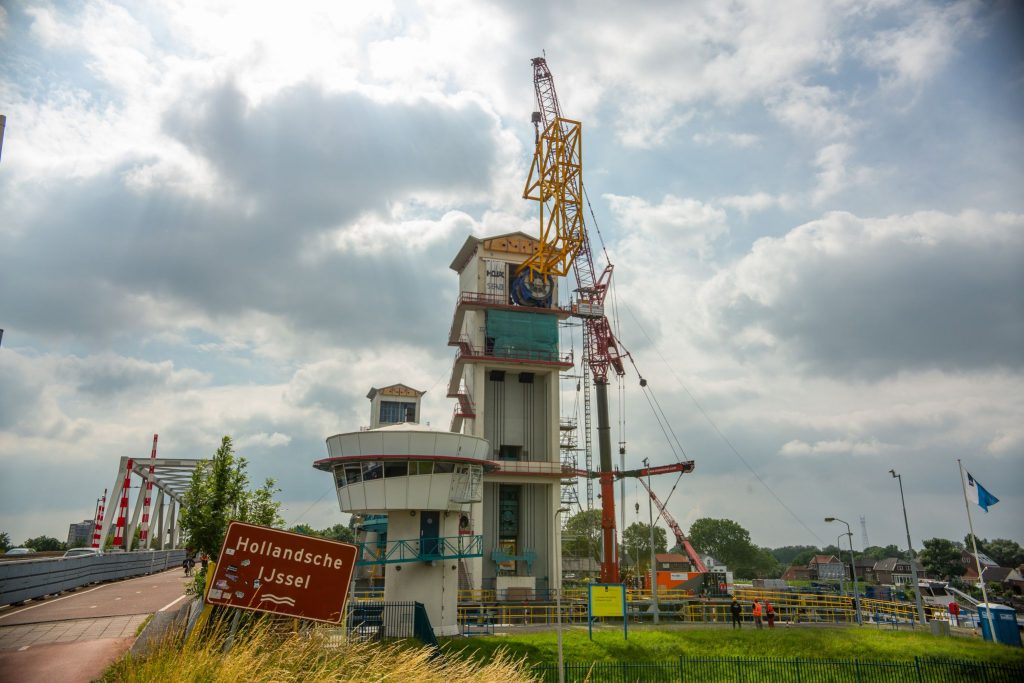
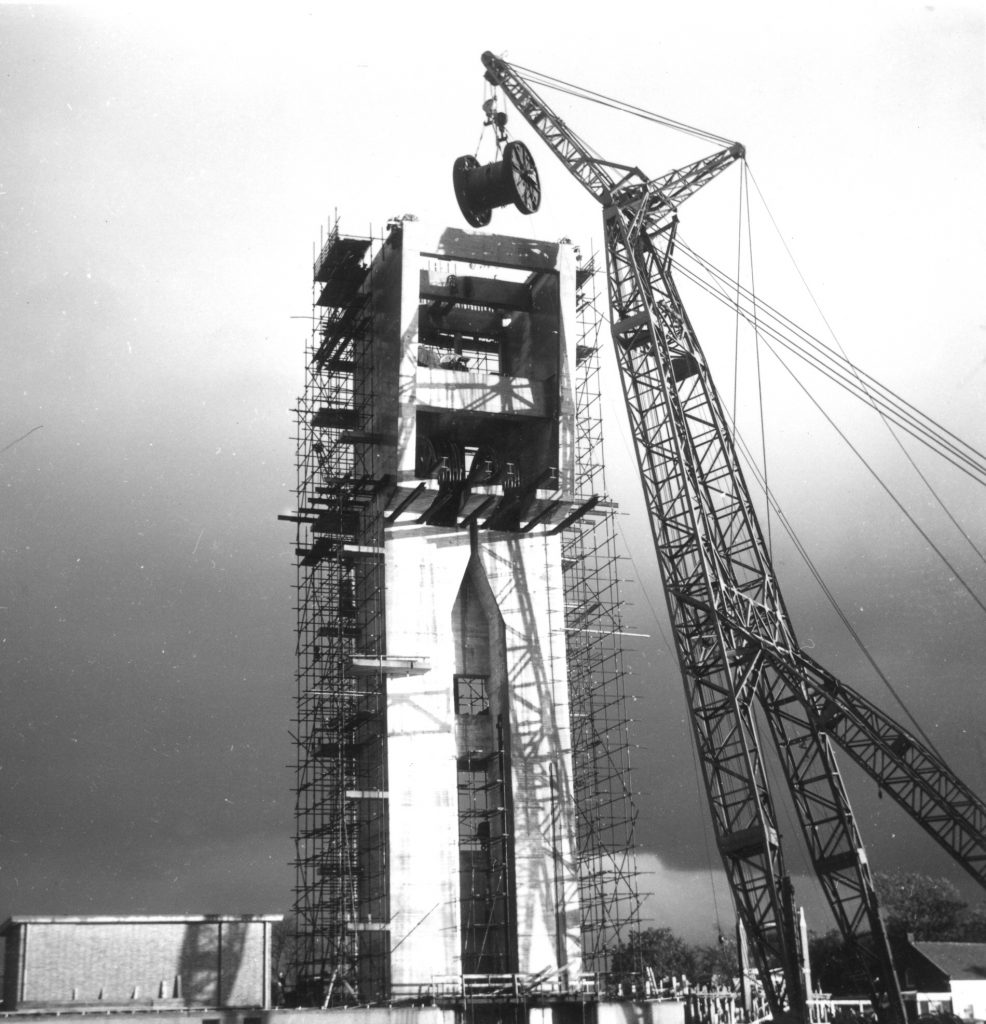
Inhijsen kabeltrommel in 1957
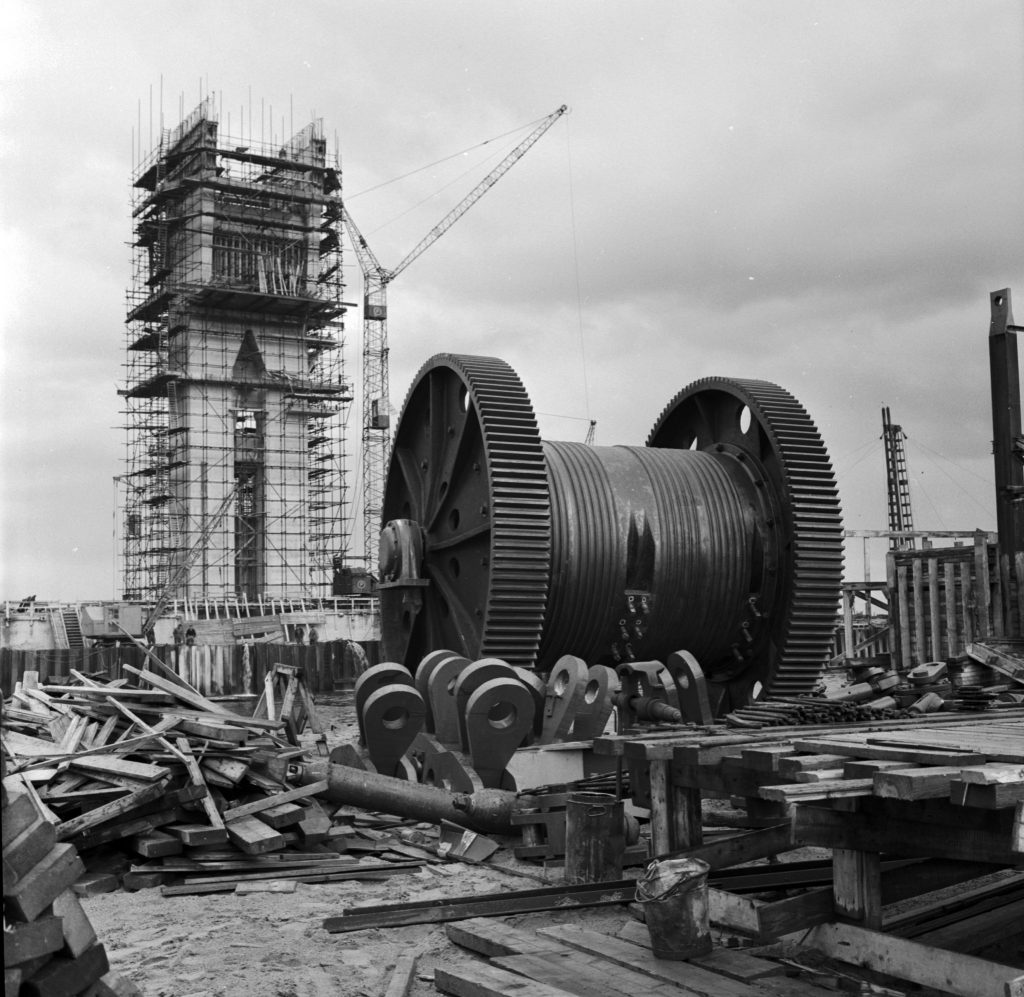
Inhijsen kabeltrommel in 1957

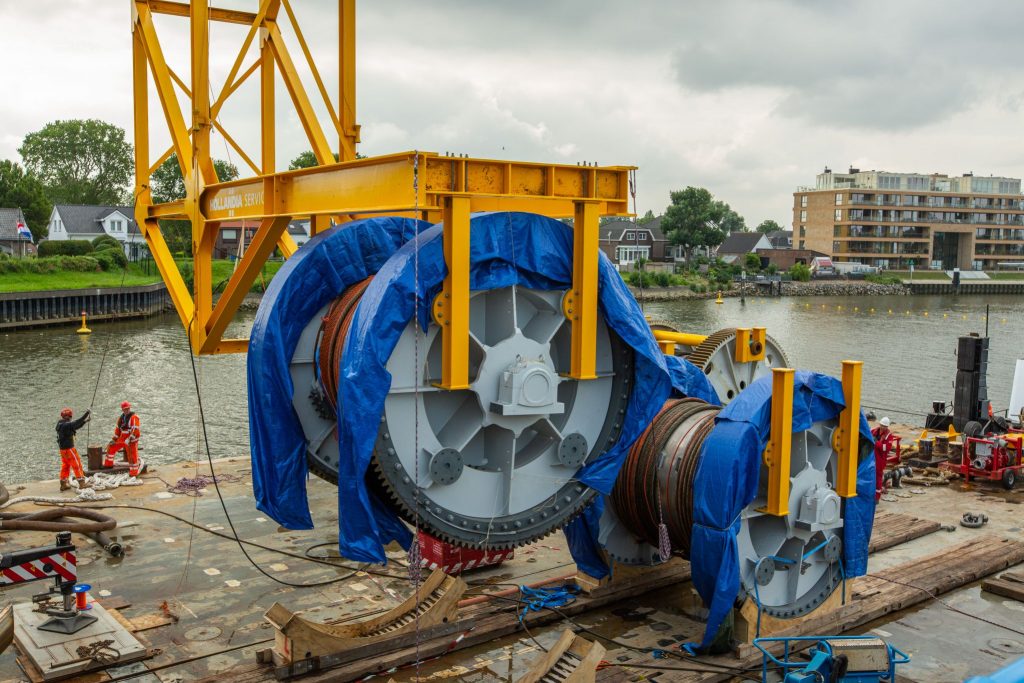
Inhijsen nieuwe kabeltrommel in 2021
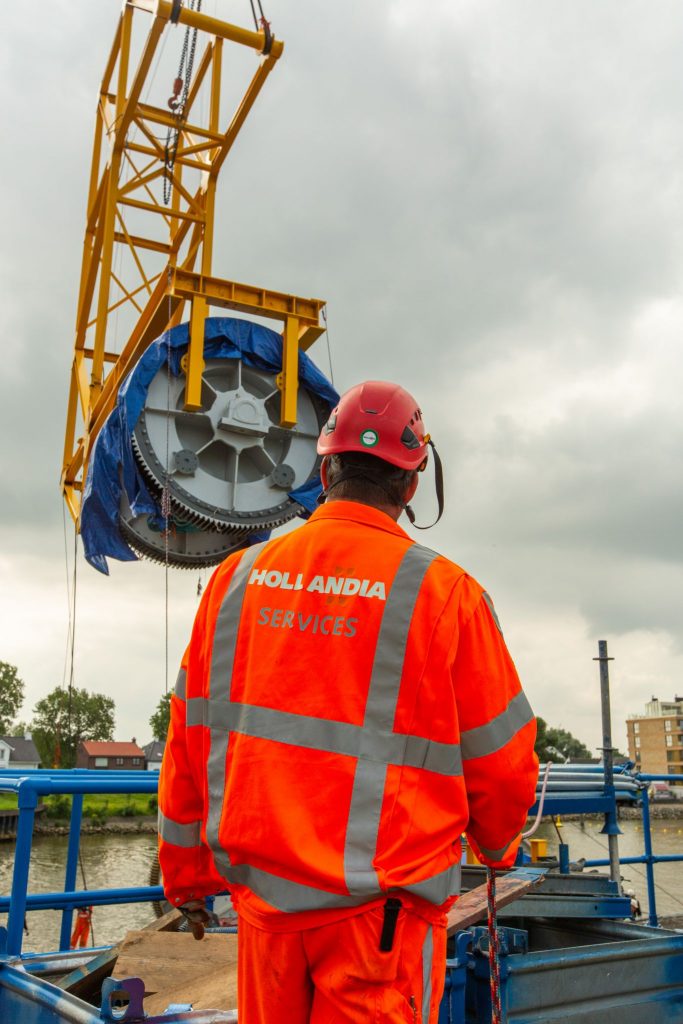
Inhijsen nieuwe kabeltrommel in 2021
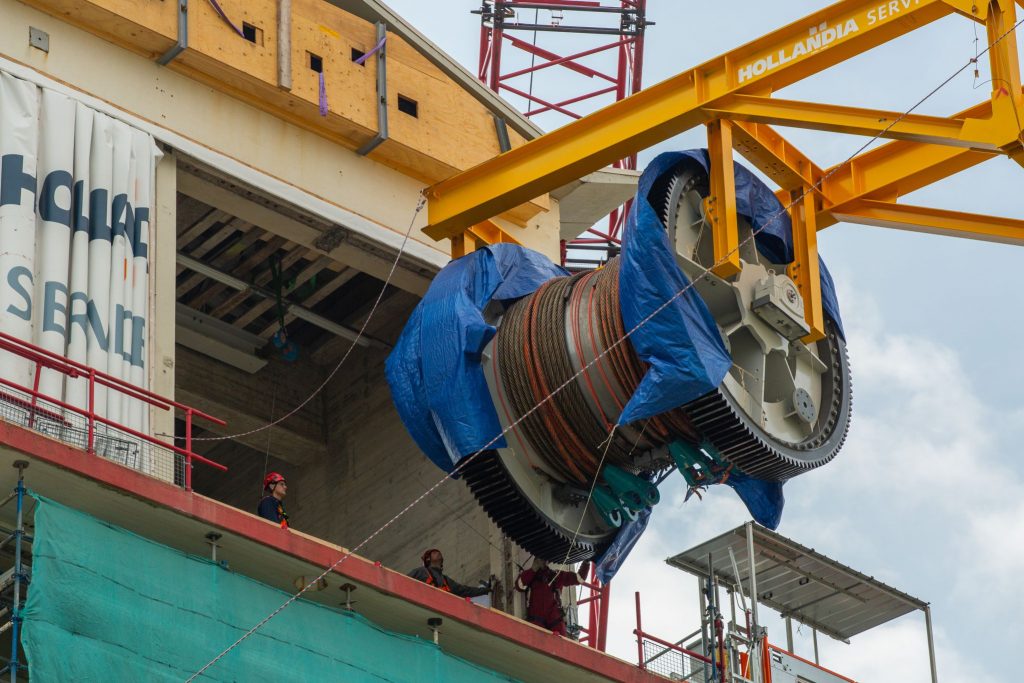
Inhijsen nieuwe kabeltrommel in 2021
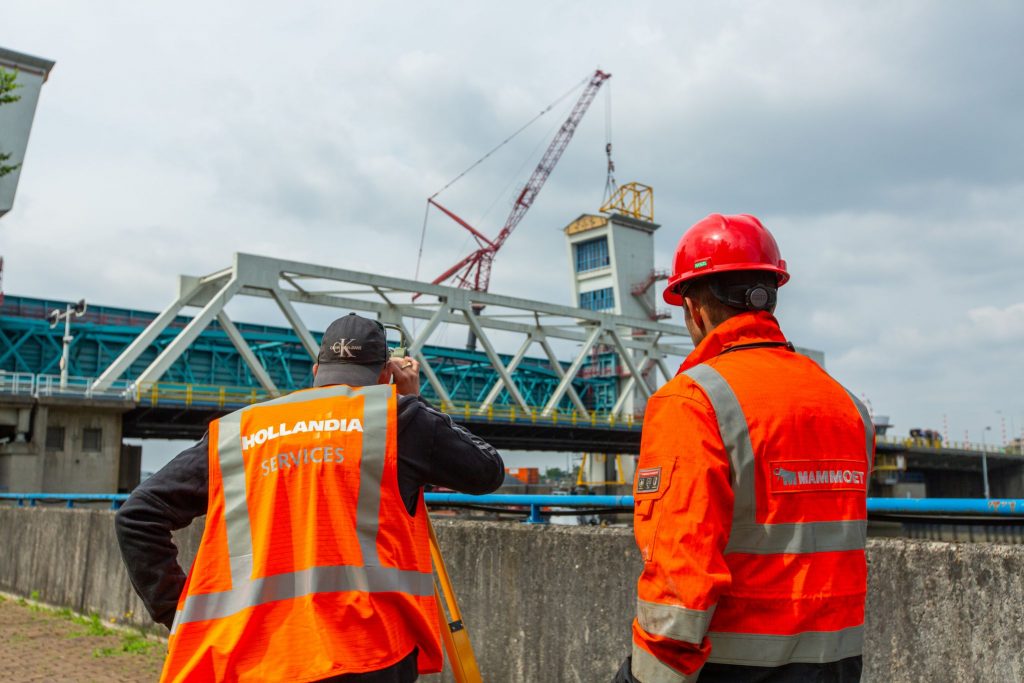
Hollandia persbericht nieuwe kabeltrommels voor Hollandsche IJsselkering

Inhijsen nieuwe kabeltrommel in 2021
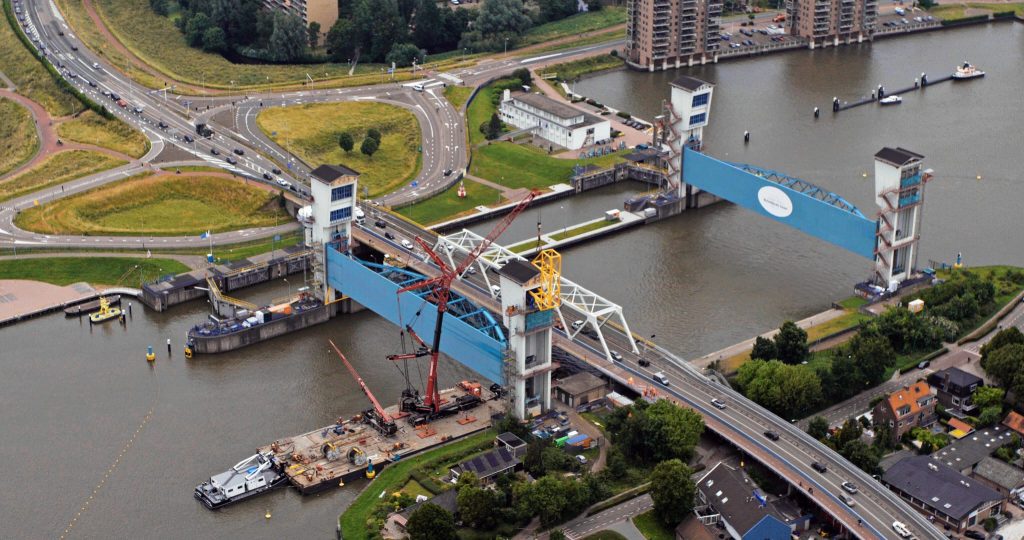
Inhijsen nieuwe kabeltrommel in 2021
New muscles
,,This is fairly unique”, says Marion Tusveld, head of the Rijkswaterstaat flood defence division. ,,The old lady, as many in the neighbourhood affectionately call her, is getting new muscles. The old cable drums act as a kind of pulley to move the gates of the storm surge barrier up and down. The two 480-ton steel gates go down in a storm or at high tide to protect the lowest lying part of the Netherlands. The barrier currently closes three or four times a year to protect against high water, but we expect this to happen more often in the coming decades due to the rising sea level”.
Rising sea level
,,We have therefore designed the cable drums to be more robust”, says Ronald van den Berg, director of Hollandia Services. Thanks to these more robust drums, the entire drive line and thus the barrier itself, can easily withstand a rising sea level.
Genuine Dutch ingenuity
The Krimpen steel construction company is carrying out this renovation and has also designed and built the new drive system. The big challenge in replacing the cable drums was to hoist them out and in within the existing lift towers. In the original construction, the slider was not yet between the towers, which allowed the crane to come straight up to the openings. Now, the crane has to round a corner, as it were, and hoist the drums in and out sideways. The monumental towers must remain fully intact in the process. This is quite a precision job, for which Hollandia devised a clever auxiliary construction: with this so-called ‘pallet hook’, the lifting point remains outside the towers, but the 42-ton cable drums can still be hoisted out and in fully controlled. Months of preparation and testing preceded this and this method proved to be very successful. “In addition, we as Hollandia are still involved in this barrier, both in the past and today. And of course we are very proud of that”, says Ronald van den Berg.
Working in the summer
Storms can occur all year round. Working on protection against high water and storm surges is therefore a permanent necessity in the Netherlands. During the storm season in particular, which runs from 1 October to 15 April, there is the greatest chance of a big storm pushing the water up so high that the water levels become extra high. Everything must then be in order. Rijkswaterstaat did a lot of work this summer to keep the storm-surge barriers storm-proof, for example at the Hollandsche IJssel barrier.
Delta Works in top condition
The Hollandsche IJssel barrier at Krimpen aan den IJssel protects the lowest lying part of the Netherlands, 6.76 m below NAP in Nieuwerkerk aan den IJssel. This Delta work was the first of the 13 to be completed. Rijkswaterstaat started construction one year after the 1953 flood disaster; the barrier was completed in 1958. The monumental barrier also functions as a bridge and waterway. By keeping the Delta Works in top condition, they remain extremely strong and safe. Rijkswaterstaat will carry out special maintenance on the Hollandsche IJssel barrier, the Maeslant barrier, the Hartel barrier, the Volkerak locks and the Haringvliet locks until 2023. We are repairing and replacing parts and improving the operation. We opt for sustainable solutions. In combination with other measures, the barriers protect the residents of South Holland, West Brabant, Utrecht and Zeeland against high water.
————————————————————————
Hollandia Services and Rijkswaterstaat have compiled a press folder for you containing photos of the hoisting and retraction of the drums, an overview film and some historical photos of the construction of the barrier.
Download link: https://we.tl/t-QrDNDF8wSN
